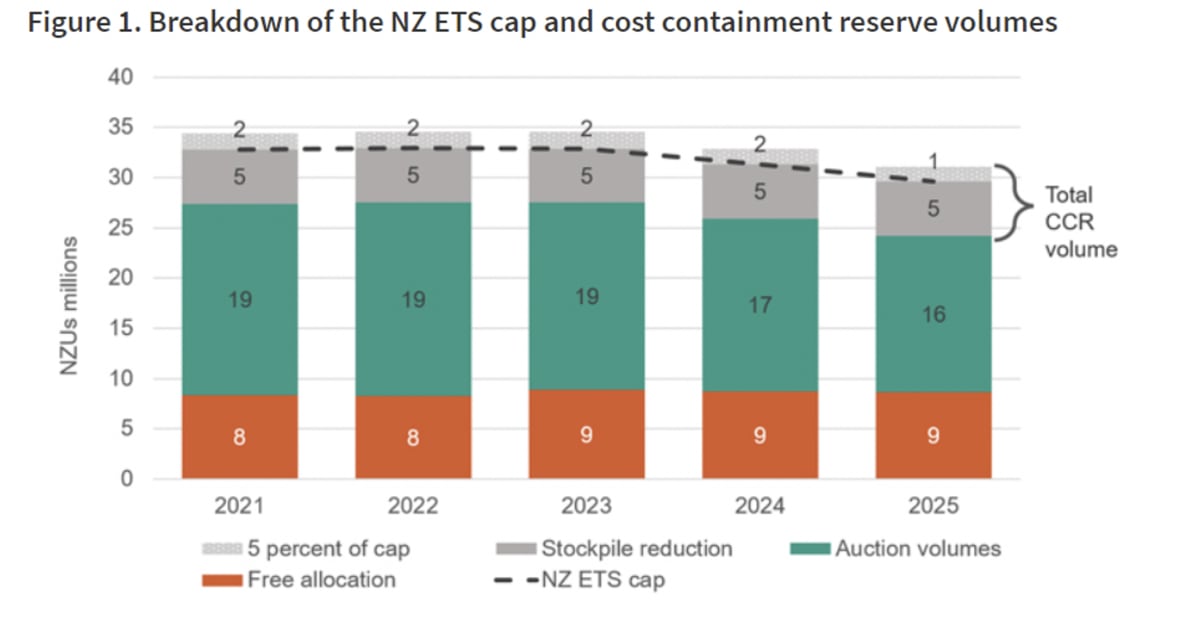The current incarnation of the ETS is much stronger. The cap-and-trade scheme now has an actual cap on total credits and net emissions available in the system: 32 million units are available in the system in 2021, reducing to 30 million in 2025.
Previously, the Government capped prices by simply creating new credits at an ETS price of $25 per unit. Now, its cost-containment reserve will require the Government instead find real emission mitigation activities, whether at home or abroad, to “back” any credits created when prices hit a trigger price of $50 per unit in 2021, with the price cap rising by 2 percent each year.
Under a cap-and-trade scheme with a binding cap, every credit purchased and used within the system is a credit unavailable to anyone else.
The Ministry for the Environment estimates that every litre of petrol burned releases about 2.45 kilograms of carbon dioxide equivalent emissions. Petrol companies are required to purchase ETS credits for every litre sold. So, when the ETS price of carbon is $35 perlitretonne, as it is now, a litre of petrol carries $0.086 in carbon charges. Forty litres of petrol will include ETS credits to cover the 98 kilograms of expected emissions – costing about $3.43 at current prices.
And by now you should have worked out the answer to the opening quiz question.
If National’s policy works exactly as intended, tripling electric vehicle numbers and reducing the use of petrol vehicles, total covered emissions in 2023 will be 33 million tonnes: exactly the same as they would be without the electric vehicles.
Every litre of petrol that goes unused because someone flipped to an electric vehicle means 2.45 kilograms of emissions are available for purchase by someone else, somewhere else in the system. Perhaps those emissions credits will be used by industrial heating processes; perhaps they will be used in agriculture. But they will be used by someone. The binding cap is binding.
There are a lot of really nice features to the ETS as it now stands. The cap is binding, but has an escape valve if prices hit $50/tonne - at that point, the government issues new credits while buying abatement wherever it can find it to back the new credits. Since the price on European markets is around that point, buying European credits could do the job. It would be nice if the price cap were tied more explicitly to European prices rather than just ratcheting by 2% per year from 2021, but the numbers are close to each other and that presumably isn't a coincidence.
The ETS is a far more effective way of reducing emissions. Suppose the real costs of National’s policy really were around $23 million per year, even though we know that the cost of the RUC exemption alone is much higher than that, and that there will be real costs when Teslas bung up bus-priority lanes.
For $23m per year, at a carbon price of $35/unit, the Government could buy and retire just under 660,000 carbon credits in the ETS – effectively tightening the cap and reducing net emissions instead of achieving net nothing. Those purchases would push up the price of ETS credits, encouraging everyone in every sector covered by the ETS to adjust in their own ways to avoid those costs. Maybe some would shift to electric vehicles as petrol prices increased, but other sectors would also change – it is hard to predict who will find it easiest to reduce their own carbon footprint, and price increases in the ETS encourages those best able to adapt to be the first ones to do so.
And here's an ungated version of the column.


No comments:
Post a Comment